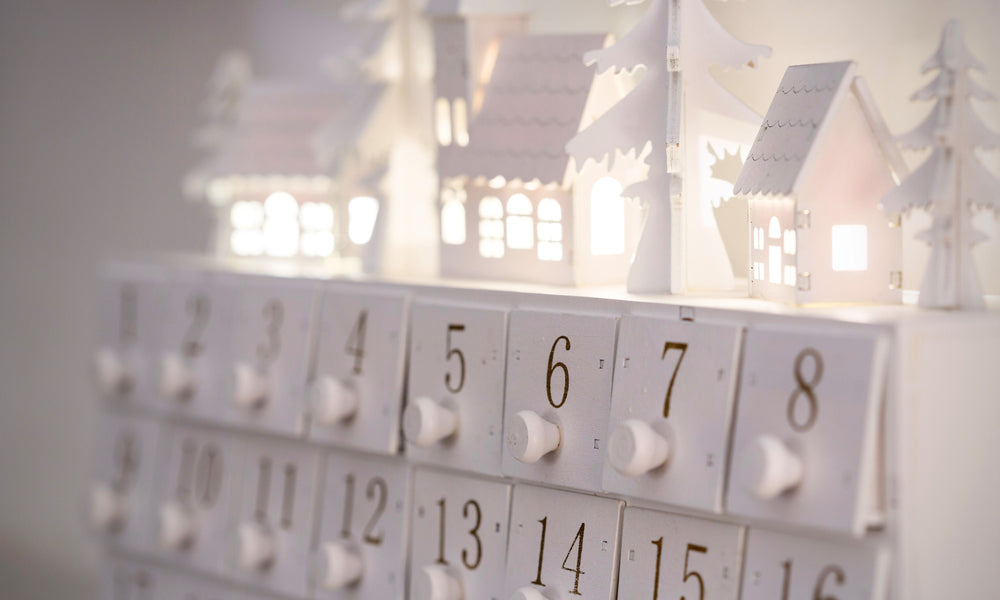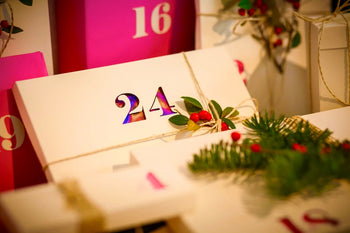Advent calendars have become an integral part of the holiday season, cherished by both children and adults alike. These festive calendars, marked by numbered doors or compartments, count down the days to Christmas, building anticipation and excitement. Let's delve into the rich history of advent calendars, exploring their origin, evolution, and the traditions that have shaped their role in Christmas celebrations.
Gerhard Lang & The Origin of Advent Calendars
The inception of the advent calendar can be attributed to the ingenuity of Gerhard Lang, a German Protestant, who crafted the very first advent calendar in the early 19th century. Born in 1881, Lang's childhood was marked by a family tradition where his mother would attach 24 cookies to a board, allowing him to eat one each day in anticipation of Christmas. This childhood memory became the seed for Lang's groundbreaking idea.
In 1903, Gerhard Lang took the concept of his mother's homemade calendar and transformed it into a tangible product. The result was a cardboard calendar featuring 24 small doors, each concealing a delightful illustration. This innovative creation aimed to build excitement and anticipation in the hearts of children as they eagerly opened a door each day on the journey to Christmas.
Interestingly, the initial advent calendars did not contain chocolates or sweets as we commonly see today. Instead, they were adorned with festive images and symbols, reflecting the religious themes associated with the Advent season. The emphasis was on the spiritual aspect of Christmas, encouraging reflection and mindfulness during the weeks leading up to the celebration of the birth of Christ.
Lang's invention marked the beginning of a cherished tradition that would endure for centuries to come. The success of his advent calendar laid the foundation for the widespread popularity and commercialization of this festive countdown, spreading joy and anticipation to households worldwide. Through Gerhard Lang's creative vision, the advent calendar became a timeless symbol of the holiday season, connecting generations in a shared experience of festive wonder and delight.
Evolution of Advent Calendars
Initially, these calendars featured religious imagery, reflecting the Christian tradition of Advent, a period of preparation and reflection leading up to Christmas. The idea was to mark the passage of time with a daily ritual, fostering a sense of anticipation and spiritual contemplation.
As advent calendars gained popularity, their designs evolved to include a variety of materials and themes. In the early 20th century, the calendars began to incorporate small treats like chocolates or sweets behind each door, adding a delightful element of surprise to the countdown. The tradition spread throughout Europe, captivating people of all ages.
In the mid-20th century, the commercialization of Christmas and the advent calendar industry grew. Manufacturers started producing pre-printed advent calendars with colorful illustrations, featuring popular holiday motifs and characters. By the 1950s, advent calendars had become a staple in many households, symbolizing the joy and excitement of the holiday season.
Traditional Advent Calendar Designs
While modern advent calendars come in a myriad of designs and materials, traditional elements are often incorporated to maintain a connection to their historical roots. Many calendars still feature 24 numbered doors, each concealing a small treat. The treats can vary from chocolates and candies to small toys, creating a daily ritual of joy and surprise.
Religious-themed advent calendars, with biblical verses or nativity scenes, continue to be popular among those who observe the religious significance of Christmas. Additionally, contemporary designs might include innovative approaches such as reusable fabric calendars or digital versions accessible through apps, reflecting the ever-changing nature of holiday traditions.
Cultural Significance and Global Spread
The advent calendar tradition has transcended its German origins and has become a global phenomenon. Different cultures have adapted the concept to suit their unique holiday traditions, incorporating local themes and customs into the design and content of advent calendars.
In recent years, advent calendars have expanded beyond the realm of sweets and treats. Beauty advent calendars feature miniature cosmetics, skincare products, and fragrances, catering to an adult audience. This diversification showcases the adaptability of the advent calendar concept, appealing to a wide range of interests and age groups.
25 Days of Surprises
From its humble beginnings in 19th-century Germany to its widespread popularity in the 21st century, the advent calendar has evolved into a cherished holiday tradition. Whether steeped in religious significance or adorned with secular delights, these calendars continue to captivate hearts and minds around the world. As we eagerly open each door, counting down the days to Christmas, we partake in a shared celebration that unites us in the spirit of joy, anticipation, and togetherness.
Running out of time to find the perfect Christmas Tree?
Check out Rent-A-Christmas Pre-Decorated Greenery!






